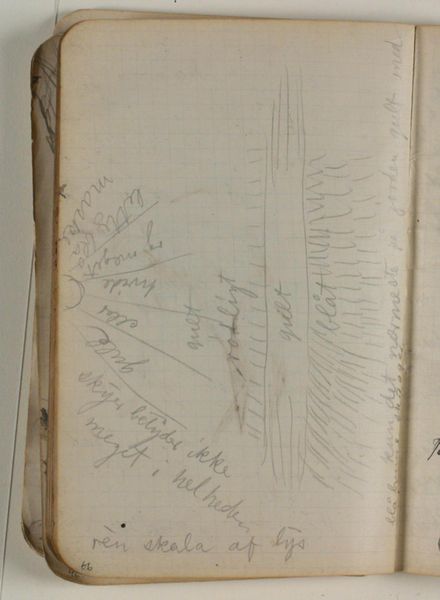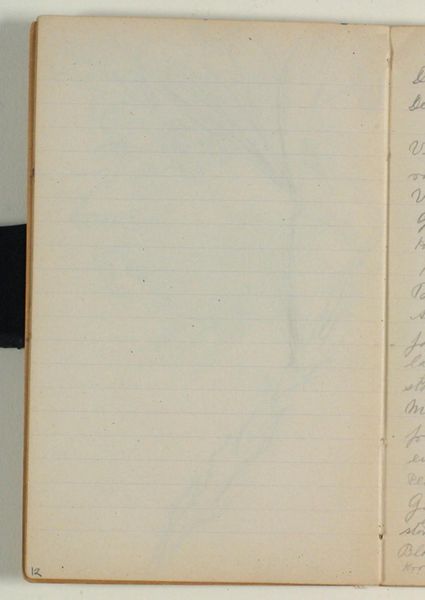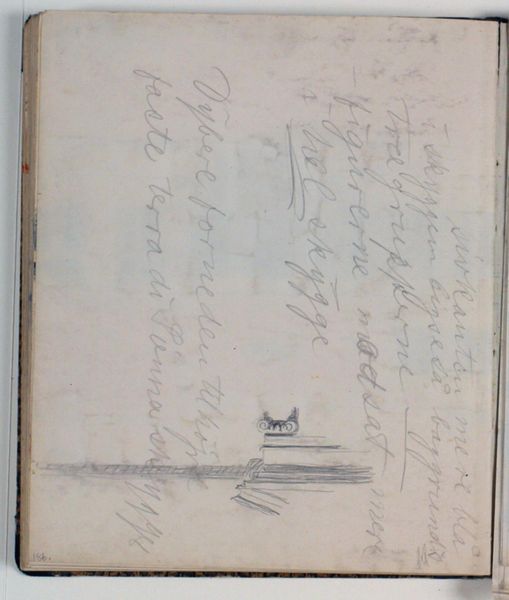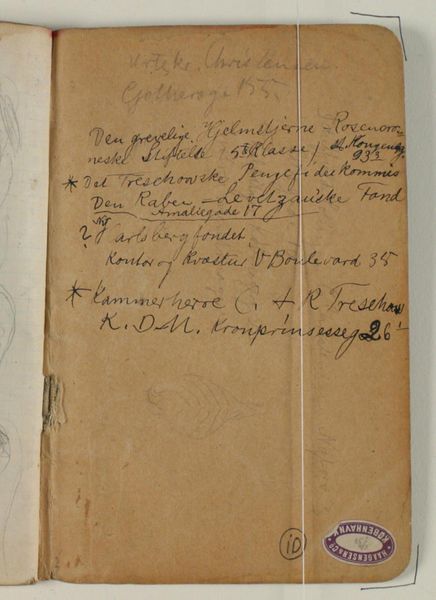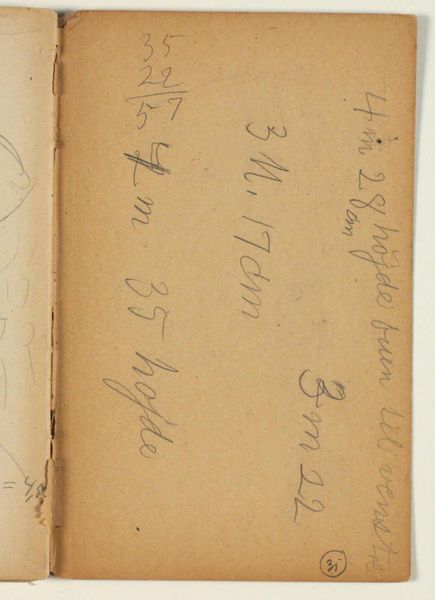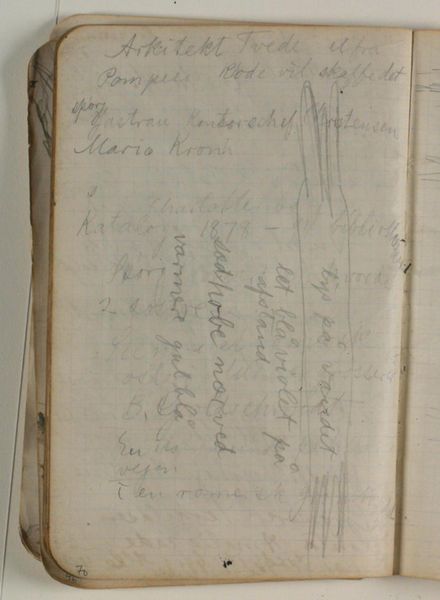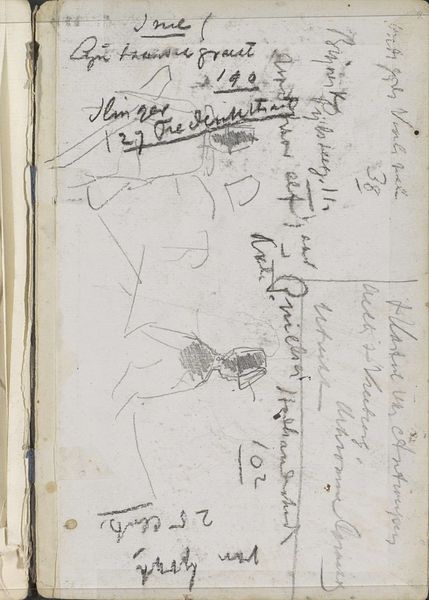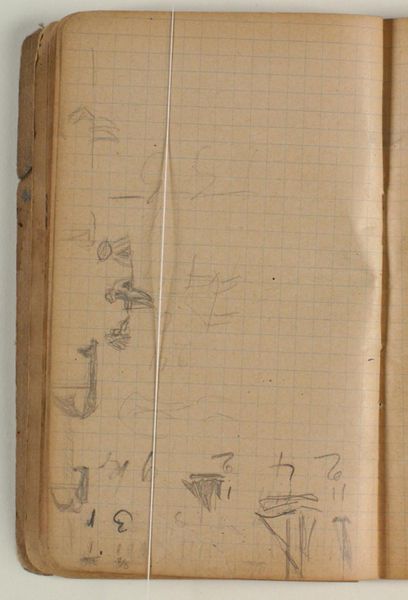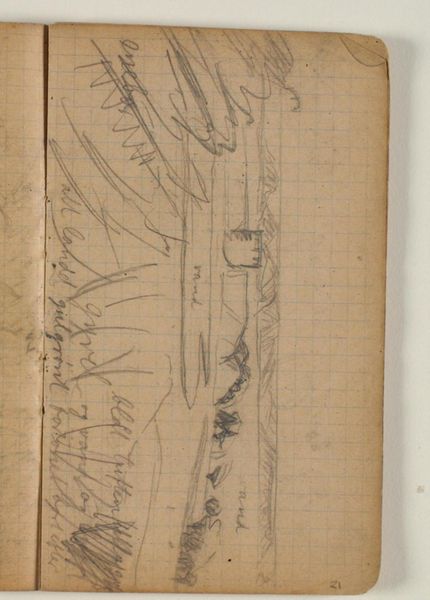
drawing, paper, pencil
#
drawing
#
paper
#
pencil
Dimensions: 169 mm (height) x 109 mm (width) x 5 mm (depth) (monteringsmaal), 169 mm (height) x 109 mm (width) (bladmaal)
Curator: Welcome. Today, we’re looking at Niels Larsen Stevns’ "Adresser og løse rids" dating from around 1905 to 1907. It’s currently held at the SMK, Statens Museum for Kunst. The piece consists of pencil drawings on paper. What are your initial impressions? Editor: The first thing I notice is the notebook. You see the wire binding and a used page. And what looks like practice sketching. It appears rather ordinary—perhaps something created absentmindedly? I imagine him sketching casually during a meeting, with phone numbers or directions taken down hastily to be worked up later in the studio. Curator: It’s interesting you note the quotidian aspects. To me, this speaks to the inherent power found in commonplace markings and annotations. Even something as practical as noting an address holds the latent ability to represent something culturally. Here, we have names, street names, what could even be perceived as symbolic or geometric scribbles—a glimpse into the mind of the artist. Editor: Right, but consider this—the artist probably worked using multiple notebooks with similar means, paper quality, binding. Those things speak of cost and the level of value initially assigned. I find myself wondering about the circumstances around its making. Where were these materials sourced from? Were they expensive? Did they impact the direction and intention of the images or address notations on the page? Curator: That focus on materiality is vital. Because beyond pure economic value, the grid of the page also acts as a symbolic guide—structuring both text and image. Note how these names and addresses sit within the grid almost as an assertion of order, while the free sketches float loosely, disrupting it. Is that deliberate tension suggestive of how memory and experience interact? How the mundane becomes material for the artmaking? Editor: Definitely! The structure offers freedom for mark making. But the choice of a simple notebook like this and working through sketches, I would wager points to process rather than a finished 'high art' product for sale or exhibition. For me that moves it away from mere symbolism to a reflection on art’s means of production. Curator: A fascinating point to consider. It shows how symbols may emerge from daily habits, and equally that process also encodes meaning, even unintentionally. Editor: Yes, process informs every mark made within the materiality of it. Curator: Indeed. Another layer revealed in this rich conversation. Editor: Exactly, now I see even more within a simple book!
Comments
No comments
Be the first to comment and join the conversation on the ultimate creative platform.
